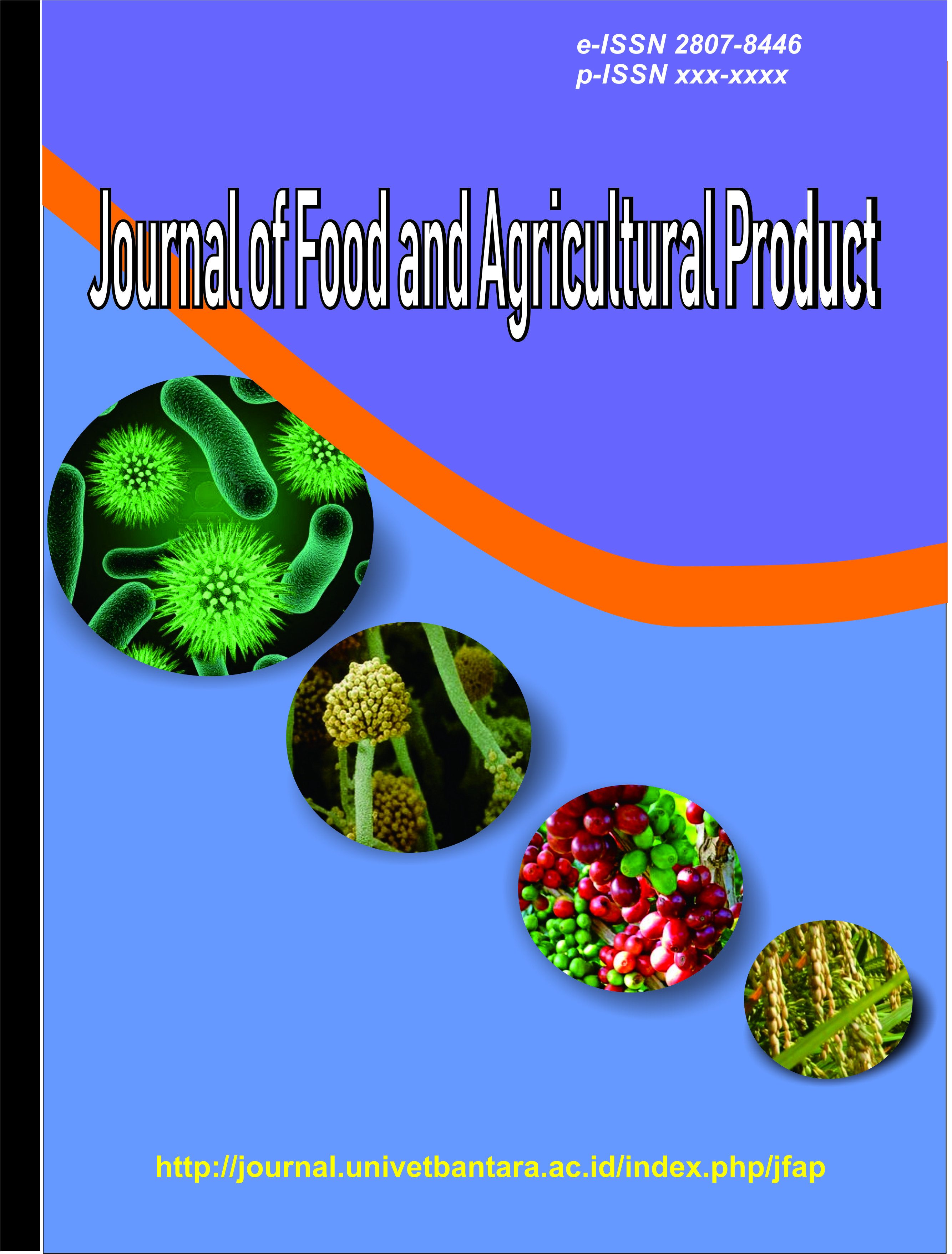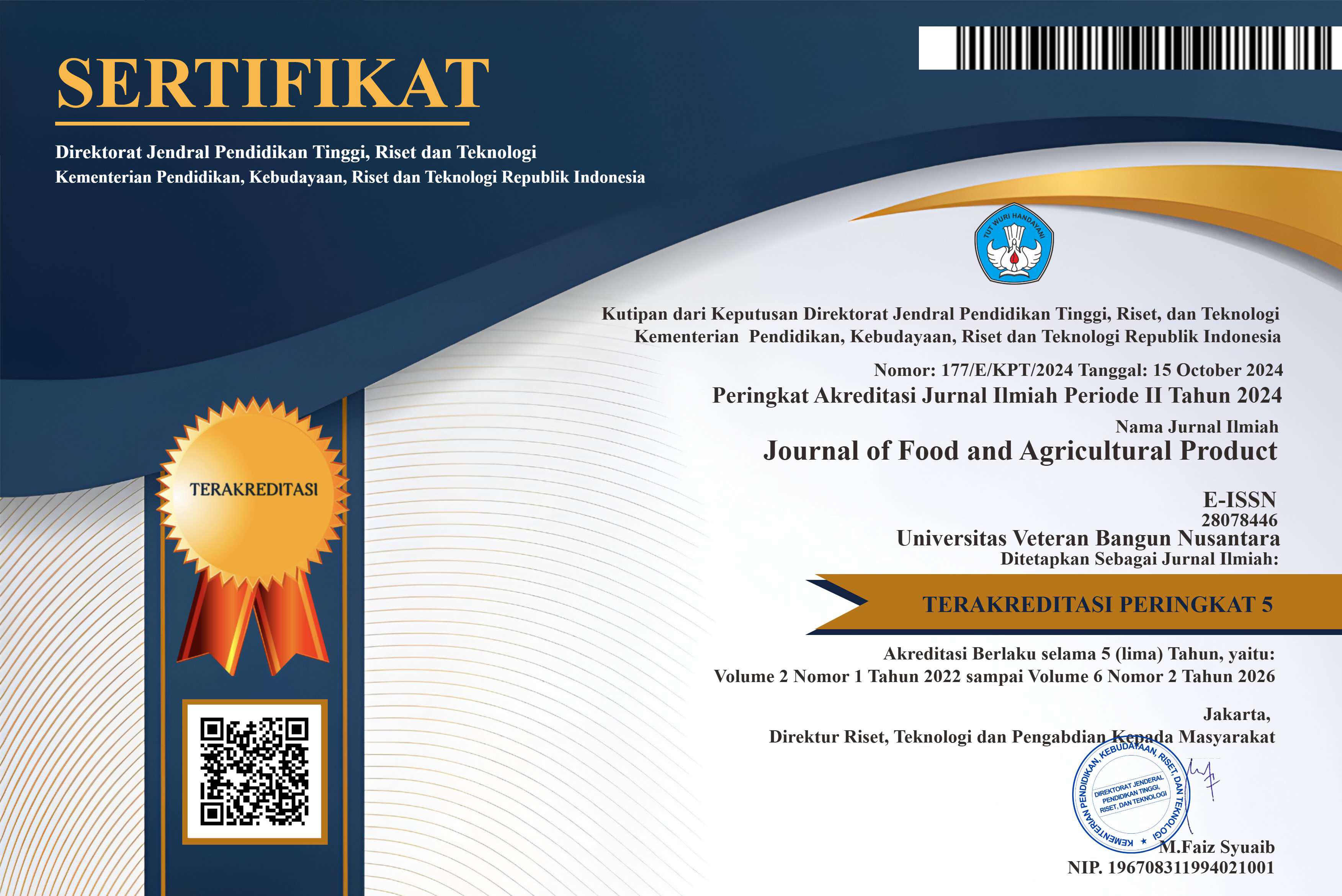Physicochemical And Organoleptic Characteristics on Cookies Innovation with the Addition of Taro Flour (Colocasia esculenta) and Edamame Flour (Glycine max)
DOI:
https://doi.org/10.32585/jfap.v5i1.6196Abstract
The use of taro tuber flour as a substitute for wheat flour in food processing is one of the preferences that can be made to reduce dependence on the use of wheat flour by innovating or increasing the use of non- wheat flour. One of the types of processed foods that can utilize taro tuber flour is Cookies. In addition, Cookies can also be added with additional nutritional content in the form of protein from edamame flour. The purpose of this study was to determine the effect of the addition of taro and edamame tuber flour on the sensory and physicochemical quality of cookies. The method used in this study was a complete random design (RAL) of five formulations with three replicates. The data obtained was analyzed using ANOVA (Analysis of Variance) and continued with the DMRT test. The results obtained based on sensory testing showed that the formulation with the addition of taro flour as much as 80 grams and edamame flour 10 grams. The results of the physicochemical test which included a physical test in the form of a texture test with a hardness level of 104.28 N, a breaking force of 9.11 N and chemical tests including a moisture content test of 2.44%, protein content of 7.59%, and starch content of 10.98%.
Keywords: Cookies, edamame, physocochemical, organoleptic, taro.
Downloads
Downloads
Published
How to Cite
Issue
Section
License
Copyright (c) 2025 Yenny Febriana Ramadhan Abdi, Niken Ayu Putri Pamungkas, Alfi Nur Rochmah, Dininurilmi Putri Suleman, Retno Widyastuti

This work is licensed under a Creative Commons Attribution-NonCommercial-ShareAlike 4.0 International License.




